From: Prospective Industry Research Institute
major listed companies in the industry: hongdu aviation (600316); Zhongzhi shares (600038); CITIC Haizhi (000099); Aerospace Rainbow (002389); Vertical and horizontal shares (688070), etc.
1. Policy history chart
Low-altitude economy is an economic field composed of a series of economic activities with air transportation and operational equipment technology as the main means, low-altitude airspace as the main activity field, and low-altitude flight activities as the final form of production. The state maintains a supportive attitude towards the development of low-altitude economic industries.
The Eighth Five-Year Plan (1991-1995) clearly stated that the construction of navigation systems and air control systems should be strengthened. Further increase the air transport capacity of trunk and feeder lines, rationally plan the route network and open up new routes as needed. International routes mainly consolidate existing routes and improve competitiveness. Enhance the operational capacity of general aviation. The "14th Five-Year Plan" proposes to promote the expansion and upgrading of high-grade inland waterways, steadily build regional airports, general airports and cargo airports, and actively develop general aviation.
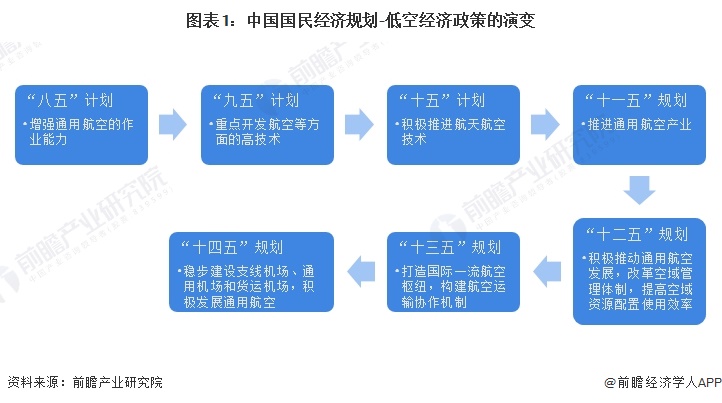
2. Summary and interpretation of national policies
-- Summary of national low-altitude economic industry policies
Low-altitude economy is a comprehensive economic form based on low-altitude airspace, guided by the low-altitude flight activities of various manned and unmanned aerial vehicles, and radiation drives the integration and development of related fields. The UAV industry is a strategic emerging industry in China during the "14th Five-Year Plan" period, and it has become an important engine for the development of the "low-altitude economy. China has promulgated a number of policies to support and regulate the drone industry, thus contributing to the high-quality development of China's low-altitude economy.
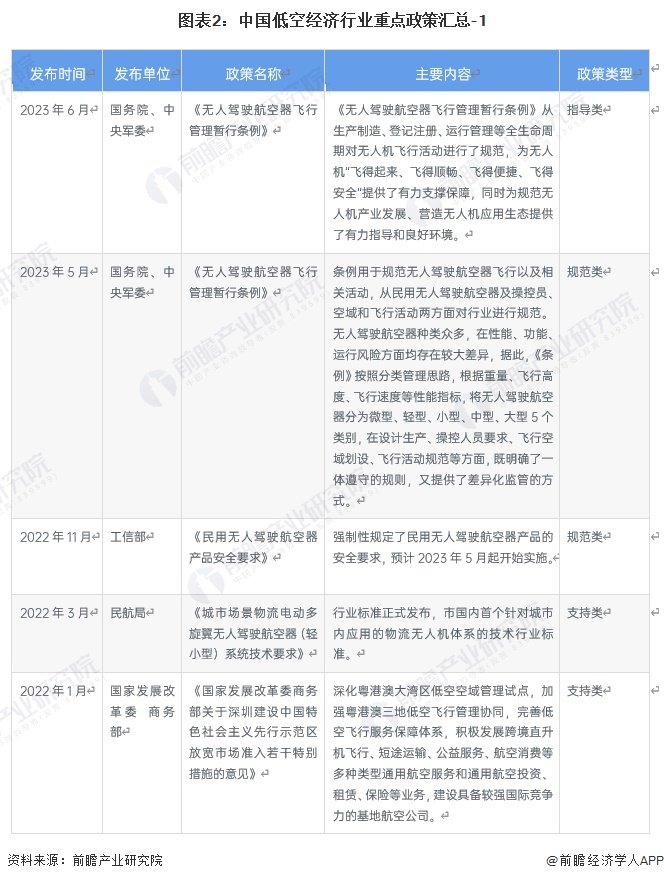
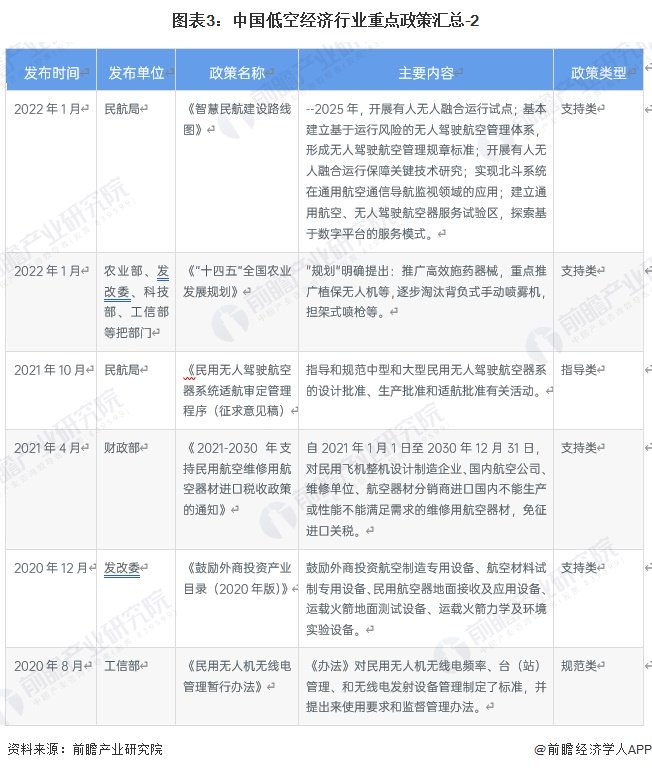

-- Impact of the Provisional Regulations on the Flight Management of Unmanned Aerial Vehicles on the Development of the Low-altitude Economy Industry
With the promulgation of a series of relevant laws and regulations, the drone industry will enter a new stage of standardized development with laws to follow, and build a new pattern of low-altitude economic development.
the interim regulations on the Flight Management of unmanned aerial vehicles regulate the flight activities of unmanned aerial vehicles from the whole life cycle of production, manufacturing, registration, operation and management, and provide strong support and guarantee for unmanned aerial vehicles to "fly up, fly smoothly, fly conveniently, and fly safely". At the same time, it provides strong guidance and a good environment for standardizing the development of the UAV industry and creating a UAV application ecology. It can be expected that in a good development environment, "drones" will empower more and wider industry fields in the future, and new low-altitude application scenarios such as terminal logistics, urban governance, and urban air traffic will emerge on a larger scale. In the end, China will form a new pattern of wide-area interconnection, ubiquitous perception, intelligent control, precise supervision, safe and reliable low-altitude application development, and the take-off of China's low-altitude economy is just around the corner.
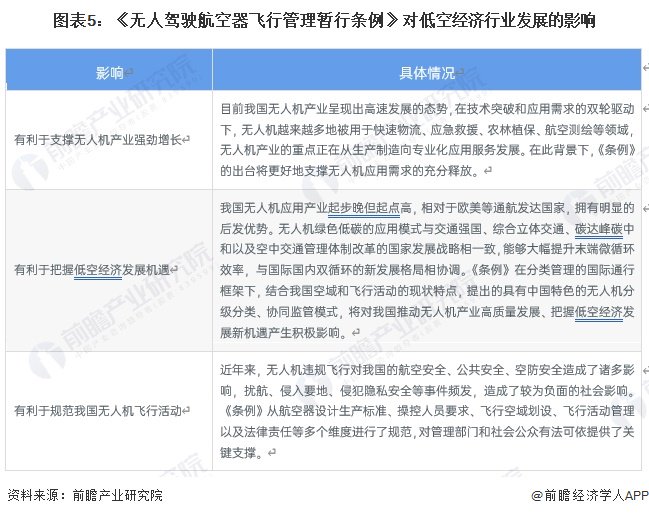
-"14th Five-Year Plan for the Development of Modern Comprehensive Transportation System" on the Development of Low-altitude Economic Industries
The 14th Five-Year Plan for the Development of a Modern Comprehensive Transportation System proposes to deepen the reform of the low-altitude economy. We will continue to promote the reform of the air traffic control system, improve the joint operation mechanism of military and civilian air traffic control, implement the fine management of airspace resource classification, optimize the national air route network, and deepen the reform of low-altitude airspace management.

-- Summary of the impact of the policy environment on the development of low-altitude economic industries
UAVs have become an important support for low-altitude economic development. As a combined economic form, the core of low-altitude economy is the integration of aircraft and various industrial forms. It is driven by the low-altitude flight activities of various manned and unmanned aircraft, and the radiation drives the integration and development of related fields, which is widely reflected in Various industrial forms. China's relevant laws and regulations on low-altitude economic industries are being continuously revised and improved to provide strong legal support for the development of technology research and development and market norms in my country's low-altitude economic industries.
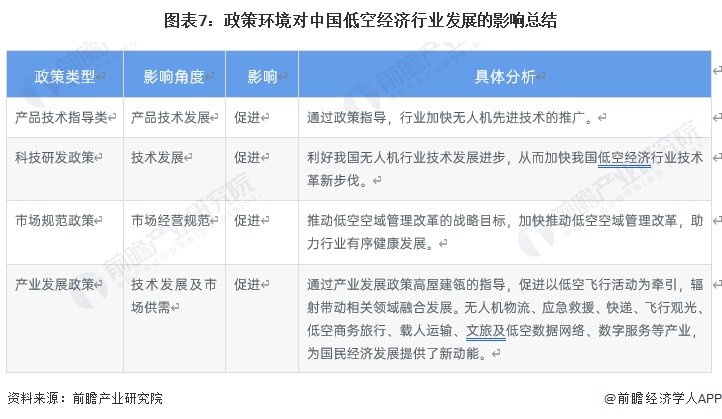
3. summary and interpretation of policies at the provincial and municipal levels
-- 31 provinces and cities low-altitude economic industry policy summary
31 provinces and cities have also issued a number of policies to support the development of low-altitude economic industries in accordance with national plans. As of December 20, 2023, policies issued by many regions have focused on the development of new business models such as low-altitude tourism, and the standardization of low-altitude airspace management system.
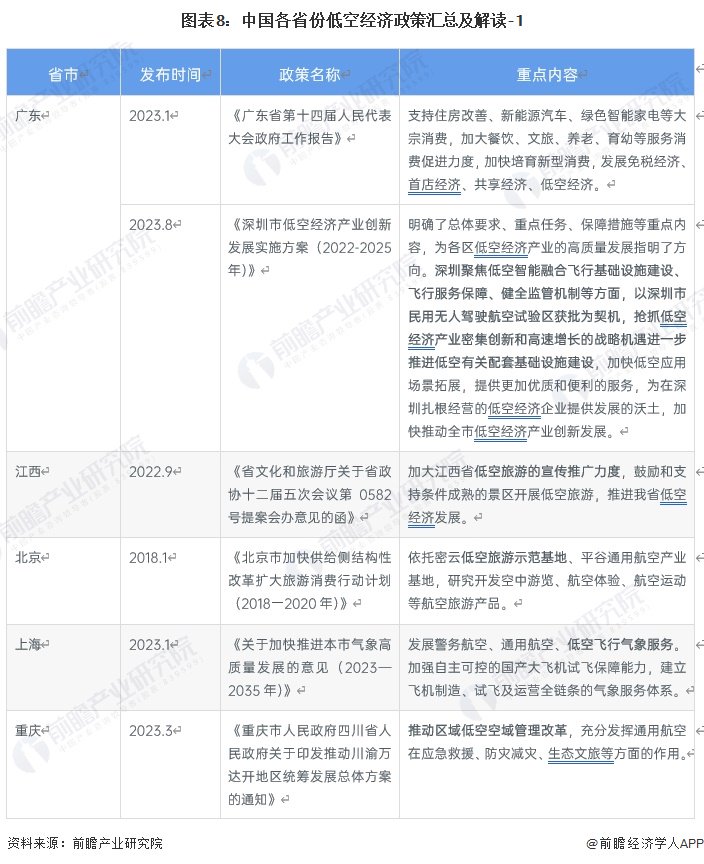

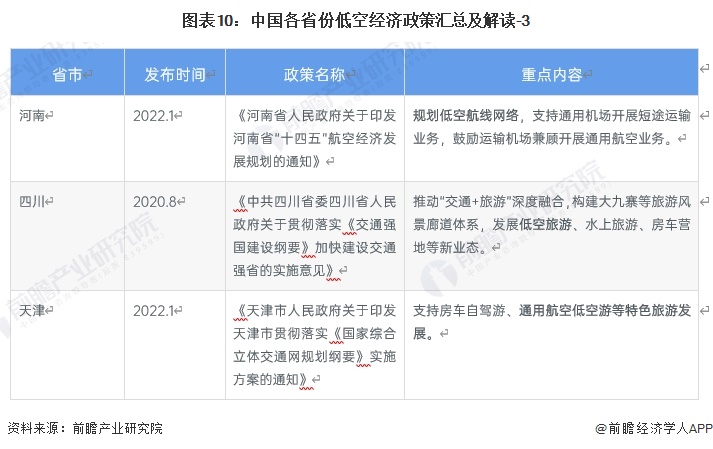
-- 31 provinces and cities low-altitude economic industry development goals interpretation
As the basis of business development, physical and information infrastructure has certain public welfare and general attributes, so it is often planned by the government or state-owned enterprises. Local governments, led by Hunan and Anhui, have set up state-owned platforms to undertake the construction of drone infrastructure, helping the continuous development of market players. Hunan Province established the General Aviation Development Group as a state-owned enterprise, positioning to undertake key responsibilities such as general aviation operations, flight services, low-altitude surveillance and industrial development, and has achieved multiple model innovations in the aspects of facility operation mode, low-altitude flight services and policy systems. Anhui Province has set up a general aviation holding group as a state-owned platform, and has set up a joint venture with civil aviation to jointly reuse civil aviation talents, capabilities, facilities and other resources. It has positioned several major functions such as investment and financing construction and operation of general aviation airports, general aviation flight management and service guarantee, consumer market cultivation and industrial development, technology research and development, talent education and introduction, and industrial double recruitment and double introduction services to help the development of the industry.
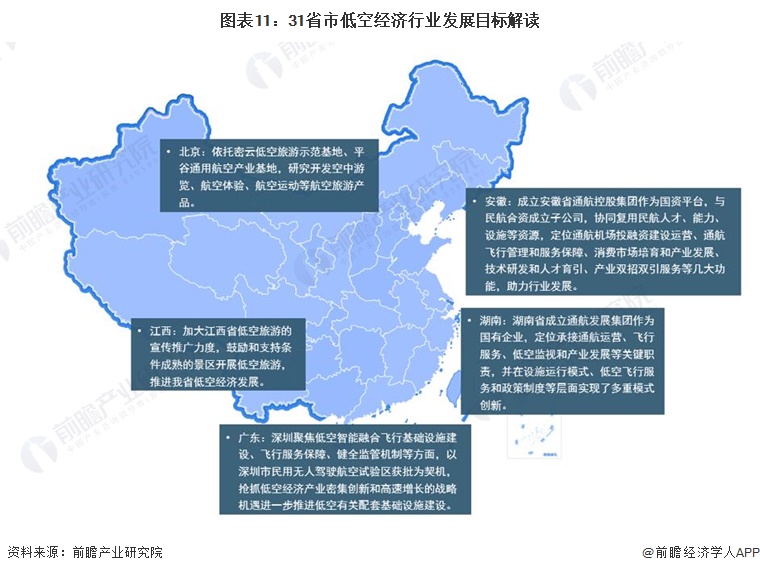
For more research and analysis of this industry, please refer to the "China Low-altitude Economy Industry Market Outlook and Investment Strategic Planning Analysis Report" by the Foresight Industry Research Institute.
at the same time, the prospective industrial research institute also provides solutions such as industrial big data, industrial research report, industrial planning, park planning, industrial investment promotion, industrial map, intelligent investment promotion system, industry status certificate, IPO consultation/feasibility study of investment raising, IPO working paper consultation, etc. Citing the contents of this article in any public disclosure such as the prospectus and the company's annual report requires formal authorization from the Prospective Industry Research Institute.
More in-depth industry analysis can be found in [Prospective Economist APP], and you can also interact with 500 economists/senior industry researchers.
Ticker Name
Percentage Change
Inclusion Date